
Released in 1984 on Hal Wilner's Shemp records, this is the 1st reissue for late drummer Beaver Harris' 360-degree Experience with pianist Don Pullen on piano, in a stellar band with saxophonists Ricky Ford, Hamiet Bluiett, bassist Buster Williams, percussion from Candido & steel drummer Francis Haynes, and four french horn players, a truly forward-thinking jazz album.
In Stock
Quantity in Basket: None
Log In to use our Wish List
Shipping Weight: 3.00 units
EU & UK Customers:
Discogs.com can handle your VAT payments
So please order through Discogs
Sample The Album:
Beaver Harris-drums
Don Pullen-piano
Hamiet Bluiett-baritone saxophone
Ricky Ford-tenor saxophone
Buster Williams-bass
Francis Haynes-steel drums
Candido-percussion
Sharon Freeman-french horn
Willie Ruff-french horn
Bill Warnick-french horn
Greg Williams-french horn
Click an artist name above to see in-stock items for that artist.
UPC: 608887586657
Label: Corbett vs. Dempsey
Catalog ID: CVSD046C
Squidco Product Code: 25778
Format: CD
Condition: New
Released: 2018
Country: USA
Packaging: Cardboard Gatefold
Recorded at the Power Station, in New York, New York, by Vince McGarry.
"The first CD reissue of Beaver Harris and Don Pullen 360º Experience's A Well-Kept Secret, originally released on Shemp Records in 1984.
Of all the never-issued-on-CD items in history's dustbin, A Well-Kept Secret is perhaps the most egregious. The beautiful studio recording, made under the watchful ear of producer Hal Willner, was first issued on LP in 1985 on Willner's own Shemp label. With its unconventional lineup featuring steel drums, Latin percussion, and French horns, along with the co-leaders' drum-kit and piano, it is among the most wonderful outings of its decade.
Pullen was in top form, his inside-outside approach to the keyboard perhaps optimally heard on the exuberant "Double Arc Jake", where the bright melody suddenly breaks into pieces, snapping back into miraculous shape.
The band includes Hamiet Bluiett on baritone saxophone and Ricky Ford on tenor saxophone, along with Buster Williams on bass, Francis Hayes on steel pans, and a special brass section led by Sharon Freeman on the 17-minute "Goree".
All compositions by Harris and Pullen. Includes original cover design by Ralph Steadman reproduced in all its glory, the CD was remastered from unplayed vinyl, as the tapes were destroyed in a fire. This is one of the classic records of creative music in the '80s, available for the first time in any digital form."-Corbett vs. Dempsey
Artist Biographies
• Show Bio for Beaver Harris "William Godvin "Beaver" Harris (April 20, 1936 - New York, New York, December 22, 1991) was an American jazz drummer who worked extensively with Archie Shepp. Harris was born in Pittsburgh, Pennsylvania. Coming from an athletic family, he played baseball as a teenager for the Kansas City Monarchs (then part of the Negro American League) and was scouted by major league teams Brooklyn Dodgers and New York Giants. It was only after he was in the army that he began playing drums. After his national service ended in 1963 he moved to New York City and was encouraged to pursue a musical career by Max Roach. While in New York he worked and/or toured with Marion Brown, Dexter Gordon, Albert Ayler, Joe Henderson, Freddie Hubbard, Clifford Jordan, Howard Johnson, Sheila Jordan, Lee Konitz, Thelonious Monk, Roswell Rudd, Sonny Rollins, McCoy Tyner, Sonny Stitt, Clark Terry, Chet Baker, Doc Cheatham and Larry Coryell among other musicians. In addition, Harris founded a "world music" band and called it "The 360 Degree Music Experience". The band included some of the most significant artists of the time, including Buster Williams, Hamiet Bluiett, Don Pullen, Jimmy Garrison, Ron Carter, Ricky Ford, Titos Sompa and many others. Harris died of prostate cancer in New York at the age of 55. His children, William Godvin Harris III, Verna Harris Vaughn, and Portia Harris." ^ Hide Bio for Beaver Harris • Show Bio for Don Pullen "Don Gabriel Pullen (December 25, 1941 Ð April 22, 1995) was an American jazz pianist and organist. Pullen developed a strikingly individual style throughout his career. He composed pieces ranging from blues to bebop and modern jazz. The great variety of his body of work makes it difficult to pigeonhole his musical style. Pullen was born on December 25, 1941, and raised in Roanoke, Virginia. Growing up in a musical family, he learned the piano at an early age. He played with the choir in his local church and was heavily influenced by his cousin, Clyde "Fats" Wright, who was a professional jazz pianist. He took some lessons in classical piano and knew little of jazz. At this time, he was mainly aware of church music and the blues. Pullen left Roanoke for Johnson C. Smith University in North Carolina to study for a medical career but soon he realized that his true vocation was music. After playing with local musicians and being exposed for the first time to albums of the major jazz musicians and composers he abandoned his medical studies. He set out to make a career in music, desirous of playing like Ornette Coleman and Eric Dolphy. In 1964 he went to Chicago for a few weeks, where he encountered Muhal Richard Abrams' philosophy of making music. He then headed for New York, where he was soon introduced to avant-garde saxophonist Giuseppi Logan, who invited Pullen to play piano on his two albums, Giuseppi Logan (ESP, October 1964) and More (ESP, May 1965), both exercises in structured free playing. Although these were Logan's recordings, most critical attention[who?] was given to the playing of percussionist Milford Graves and the unknown Pullen. Subsequently, Pullen and Graves formed a duo. Their concert at Yale University in May 1966 was recorded. They formed their own independent SRP record label (standing for "Self Reliance Project") to publish the result as two LPs. These were the first records to bear Pullen's name, second to Milford's. Although not greatly known in the United States, these avant-garde albums were well received in Europe, most copies being sold there. These recordings have never been reissued. Finding little money in playing avant-garde jazz, Pullen began to play the Hammond organ to extend his opportunities for work, transferring elements of his individual piano style to this instrument. During the remainder of the 1960s and early 1970s, he played with his own organ trio in clubs and bars, worked as a self-taught arranger for record companies, and accompanied various singers including Arthur Prysock, Irene Reid, Ruth Brown, Jimmy Rushing and Nina Simone. In 1972, Pullen briefly appeared with Art Blakey's Jazz Messengers. Pullen often polarized critics and suffered from two undeserved allegations: the first (despite his grounding in the church and blues) that he was purely a free jazz player and thus unemployable in any other context; the second that he had been heavily influenced by Cecil Taylor or was a clone of Taylor, to whose playing Pullen's own bore a superficial resemblance. Pullen strenuously denied that he had any link with Taylor, stating that his own style had been developed in isolation before he ever heard of Taylor. But the assertion of Taylor's influence continued to haunt Pullen to the end of Pullen's life, and persists even to this day. Pullen appeared on no more commercial recordings until 1971 and 1972 when he played organ on three recordings by altoist Charles Williams, one being issued under the title of a Pullen composition, "Trees And Grass And Things".Mingus connection (1973 to 1975) In 1973 drummer Roy Brooks introduced Pullen to bassist Charles Mingus, and after a brief audition he took over the vacant piano chair in the Mingus group; when a tenor saxophone player was needed, Pullen recommended George Adams; subsequently, Dannie Richmond returned on drums; these men, together with Jack Walrath on trumpet, formed the last great Mingus group. Being part of the Mingus group and appearing at many concerts and on three Mingus studio recordings, Mingus Moves (1973), Changes One and Changes Two (both 1974), gave great exposure to Pullen's playing and helped to persuade audiences and critics that Pullen was not just a free jazz player. Two of his own compositions, "Newcomer" and "Big Alice", were recorded on the Mingus Moves session, but "Big Alice" was not released until a CD reissue many years later. However, musical disagreements with Mingus caused Pullen to leave the group in 1975. Pullen had always played piano with bass and drums behind him, feeling more comfortable this way, but in early 1975 he was persuaded to play a solo concert in Toronto. This was recorded as Solo Piano Album (Sackville) and became the first record issued under Pullen's name alone. Among other pieces, it contains "Sweet (Suite) Malcolm", declared a masterpiece by Cameron Brown, Pullen's longtime associate of later years. There was now growing awareness of Pullen's abilities, but it was the European recording companies that were prepared to preserve them. In 1975 an Italian record company gave Pullen, George Adams, and Dannie Richmond the opportunity to each make a recording under his own name. All three collaborated in the others' recordings. In the same year, Pullen made two further solo recordings in Italy, Five To Go (Horo) and Healing Force (Black Saint), the latter being received with great acclaim. He became part of the regular seasonal tours of American musicians to Europe, playing in the avant-garde or free mode. In 1977, Pullen was signed by a major American record company, Atlantic Records. This led to two records, the atypical Tomorrow's Promises and the live Montreux Concert. But after these, Pullen's association with Atlantic was terminated and he returned to European companies for three recordings under his own name or in partnership: Warriors and Milano Strut in 1978, and The Magic Triangle in 1979. These, especially the startling Warriors with its strong 30-minute title track, have remained in the catalogues over the years. Meanwhile, he recorded with groups led by Billy Hart (drums), Hamiet Bluiett (baritone sax), Cecil McBee (bass), Sunny Murray (drums) and Marcello Melis (bass). On the formation of the first Mingus Dynasty band Pullen occupied the piano chair and appeared on their recording Chair In The Sky in 1979, but he soon left the band, feeling the music had diverged too far from Mingus' intentions.George Adams/Don Pullen Quartet (1979 to 1988) In late 1979 Pullen, Adams, and Richmond were booked to play as a quartet for a European tour of a few weeks' duration. Pullen invited Cameron Brown to join them on bass. They were asked to bill themselves as a "Mingus group", but not wanting to be identified as mere copyists, they declined and performed as the George Adams/Don Pullen Quartet. They played music that was more structured than Pullen normally favored, but the immediate rapport among them led to the group touring the world with unchanged personnel until the death of Richmond in early 1988. From very early in their first tour in 1979, and until 1985, the quartet made a dozen recordings for European labels, both in the studio and in concert. Of these, Earth Beams (1980), Live At The Village Vanguard (1983) and Decisions (1984) provide typically fine examples of their work at that period. Although highly regarded in Europe, the quartet felt they were not well enough known in America, so in 1986 they signed to record for Blue Note Records, for which they recorded Breakthrough (1986) and Song Everlasting (1987). Beginning the Blue Note contract with great hope of increased fame and success, as shown by the title of the first album, they became disillusioned by the poor availability of the two records. Although the power of their live concerts maintained their reputation as one of the most exciting groups ever seen, the music recorded for the Blue Note sessions was at first deemed "smoother" than on their European recordings, and took time to achieve the same high reputation. After the death of Dannie Richmond the quartet fulfilled their remaining contracted engagements with drummer Lewis Nash and then disbanded in mid-1988. Their music, usually original compositions by Pullen, Adams and Richmond, had ranged from blues, through ballads, to post-bop and avant-garde. The ability of the players to encompass all these areas, often within one composition, removed any sameness or sterility from the quartet format. Except for the early recordings on the vanished Horo label, their European recordings on Soulnote and Timeless remained frequently available, unlike those made for Blue Note. During the life of the Quartet, Pullen also made a duo recording with George Adams, Melodic Excursions (1982), and made three recordings under his own name, two further solo albums, the acclaimed Evidence Of Things Unseen (1983) and Plays Monk (1984), then with a quintet, another highly praised recording The Sixth Sense (1985) on Black Saint. He also recorded with (alphabetically) Hamiet Bluiett; Roy Brooks, the drummer who introduced him to Mingus; Jane Bunnett; Kip Hanrahan; Beaver Harris; Marcello Melis; and David Murray. All Pullen's future recordings under his own name were for Blue Note. On 16 December 1988 he went into the studio with Gary Peacock (bass) and Tony Williams (drums) to make his first trio album New Beginnings, which astonished even those familiar with his work and became widely regarded as one of the finest trio albums ever recorded. He followed this in 1990 with another trio album, Random Thoughts, in somewhat lighter mood, this time with James Genus (bass) and Lewis Nash (drums).African Brazilian connection and late career (1990 to 1995) In late 1990 Pullen added a new element to his playing and his music with the formation of his African Brazilian Connection ("ABC"). This featured Carlos Ward (alto sax), Nilson Matta (bass), Guilherme Franco and Mor Thiam (percussion) in a group which mixed African and Latin rhythms with jazz. Their first album, Kele Mou Bana, was released in 1991. Their second, but very different, album of 1993, Ode To Life, was a tribute to George Adams, who had died on November 14, 1992,containing Pullen's heartfelt and moving composition in Adams' memory, "Ah George We Hardly Knew Ya". A third album, Live...Again, recorded in July 1993 at the Montreux Jazz Festival, was not released until 1995. This featured "Ah George..." and other songs from their previous albums, in somewhat extended versions. Pullen achieved more popular and commercial success with this group than with any other. In 1993 Ode To Life was fifth on the U.S. Billboard Top Jazz Album chart. During the last few years of his life, Pullen toured with his trio, with his African Brazilian Connection, and as a solo artist, but did not release any more solo records. As a sideman and session musician, he left his mark with a variety of noteworthy artists, including (alphabetically) Jane Bunnett (notably their duo album New York Duets), Bill Cosby, Kip Hanrahan, David Murray's 1991 Shakill's Warrior, Maceo Parker, Ivo Perelman and Jack Walrath. He also toured and recorded with the group Roots from its inception. Pullen's final project was a work combining the sounds of his African Brazilian Connection (extended by Joseph Bowie on trombone) with a choir and drums of Native Americans. Despite his Native American background (his paternal grandmother was half-Indian, probably Cherokee) he began to experiment with American Indian music as late as July 1992. In 1994 Pullen was diagnosed with lymphoma. He continued to put great physical effort into completing the composition. In early March 1995 he played on his final recording, Sacred Common Ground (with the Chief Cliff Singers, Kootenai Indians from Elmo, Montana), a few weeks away from his death, returning to his heritage of the blues and the church. Unable to play at the live premiere, his place at the piano was taken by D.D. Jackson, with whom Pullen discussed the music from his hospital bed shortly before his death. He died on April 22, 1995 of lymphoma. Pullen composed many pieces, which often were portraits or memories of people he knew. All were published by his own company, Andredon, but because he for a long time suffered from neglect musically, so did many of his compositions. His best known are the humorous "Big Alice" (for an imaginary fan), "Double Arc Jake" (for his son Jake and Rahsaan Roland Kirk), the passionate "Ode To Life" (for a friend), and the aforementioned lament, "Ah George We Hardly Knew Ya". Occasionally he wrote pieces with a religious feeling, such as "Gratitude" and "Healing Force", or to highlight the plight of African-Americans, such as "Warriors", "Silence = Death", and "Endangered Species: African American Youth". Following the assassination of African-American activist Malcolm X, Pullen had written a suite dedicated to Malcolm X's memory, but this required more instrumental resources than a normal-sized jazz group provides, and only the piano parts of this were ever recorded. Except for the Plays Monk album, Pullen almost exclusively featured his own compositions on his own recordings, until his time with the African Brazilian Connection. His compositions are well represented on the George Adams/Don Pullen Quartet recordings, but his compositions which were recorded by others were usually performed by those who had known and worked with him. Although Pullen was able to play the piano in almost any style, the attribute that had made his contributions so important to the wide-ranging music of Mingus was his ability to place extremely precise singing runs or glissandi over heavy chords, reminiscent of traditional blues, while never losing contact with the melodic line. His technique for creating these runs, where he seemed to roll his right hand over and over along the keys, received much comment from critics,[who?] was studied by pianists, and heavily filmed and investigated, but could never be totally explained, even by Pullen, who had developed it. His piano technique can be seen on the DVDs Mingus At Montreux 1975 and Roots Salutes The Saxophones." ^ Hide Bio for Don Pullen • Show Bio for Hamiet Bluiett "Hamiet Bluiett (born September 16, 1940, Brooklyn, or Lovejoy, Illinois; surname pronounced BLUE-ett) is an American jazz saxophonist, clarinetist, and composer. His primary instrument is the baritone saxophone, and he is considered one of the finest living players of this instrument. A member of the World Saxophone Quartet, he also plays (and records with) the bass saxophone, E-flat alto clarinet, E-flat contra-alto clarinet, and wooden flute. Bluiett was born just north of East St. Louis in Brooklyn, Illinois (also known as Lovejoy), a predominantly African-American village that had been founded as a free black refuge community in the 1830s, and which later became America's first majority-black town. As a child, he studied piano, trumpet, and clarinet, but was attracted most strongly to the baritone saxophone from the age of ten. He began his musical career by playing the clarinet for barrelhouse dances in Brooklyn, Illinois, before joining the Navy band in 1961. He attended Southern Illinois University Carbondale. In his mid-twenties, Bluiett heard Harry Carney (the baritone player in the Duke Ellington band) play in a live concert in Boston, which also made a strong impression on the young Bluiett, providing an example of a baritone saxophonist who played as soloist rather than accompanist. Following his time in the Navy, he returned to the St. Louis area in the mid-1960s. In the late 1960s Bluiett co-founded the Black Artists' Group (BAG) of St. Louis, Missouri, a collective dedicated to fostering creative work in theater, visual arts, dance, poetry, film, and music. He led the BAG big band during 1968 and 1969. Bluiett moved to New York City in the fall of 1969, where he joined the Charles Mingus Quintet and the Sam Rivers large ensemble. In 1976 he co-founded the World Saxophone Quartet along with two other Black Artists' Group members, Julius Hemphill and Oliver Lake, as well as multi-reedist David Murray. He has remained a champion of the somewhat unwieldy baritone saxophone, organizing large groups of baritone saxophones. Since the 1990s Bluiett has led a virtuosic quartet, the Bluiett Baritone Nation, made up entirely of baritone saxophones, with drum set accompaniment. In the 1980s, he also founded the Clarinet Family, a group of eight clarinetists playing clarinets of various sizes ranging from E-flat soprano to contrabass. Bluiett has also worked with Sam Rivers, Babatunde Olatunji, Abdullah Ibrahim, Stevie Wonder, and Marvin Gaye. He returned to his hometown of Brooklyn, Illinois, in 2002 but moved back to New York City in 2012. He currently performs at gigs, including the New Haven Jazz Festival on August 22, 2009. He performed with students from Neighborhood Music School in New Haven, CT. The group were known as Hamiet Bluiett and the Improvisational Youth Orchestra." ^ Hide Bio for Hamiet Bluiett • Show Bio for Ricky Ford "Born 4 March 1954, Boston, Massachusetts, USA. Ford started to play drums, then changed to tenor saxophone at the age of 15, inspired by Rahsaan Roland Kirk. Ran Blake heard him playing in a Boston Club and persuaded him to study music at the New England Conservatory. (Blake later invited him to play on several albums too, including Rapport, Short Life Of Barbara Monk and That Certain Feeling). In 1974 Ford joined the Duke Ellington Orchestra under the leadership of Mercer Ellington and in 1976 he replaced George Adams in the Charles Mingus group, recording on Three Or Four Shades of Blue and Me Myself An Eye. In the late 70s and early 80s he played with Dannie Richmond, Mingus Dynasty, George Russell, Beaver Harris, Lionel Hampton and Adbullah Ibrahim's Ekaya group. However, following the release of his debut album in 1977 he has worked increasingly as a leader, often recording with Jimmy Cobb and ex-Ellington colleague James Spaulding. His latest releases also feature one of his New England Conservatory teachers, Jaki Byard. A strong, authoritative tenor player, Ford's fluency in most idioms of modern jazz has perhaps hindered the development of an individual voice. Ricky is from 2000 Professor at the Bilgi University in Istambul." ^ Hide Bio for Ricky Ford • Show Bio for Buster Williams "Buster Williams (born April 17, 1942 in Camden, New Jersey) is a prodigious artist whose playing knows no limits. He has played, recorded and collaborated with jazz giants such as Art Blakey, Betty Carter, Carmen McRae, Chet Baker, Chick Corea, Dexter Gordon, Jimmy Heath, Branford Marsalis, Wynton Marsalis, Gene Ammons, Sonny Stitt, Herbie Hancock, Larry Coryell, Lee Konitz, McCoy Tyner, Illinois Jacquet, Nancy Wilson, Elvin Jones, Miles Davis, the Jazz Crusaders, Ron Carter, Woody Shaw, Sarah Vaughan, Benny Golson, Mary Lou Williams, Hank Jones, Lee Morgan, Jimmy Rowles, Hampton Hawes, Cedar Walton, Bobby Hutcherson, Billy Taylor, Sonny Rollins, Count Basie, Errol Garner, Kenny Barron, Charlie Rouse, Dakota Staton, Kenny Dorham, and Freddie Hubbard, to name a few. Mr. Williams has recorded soundtracks for movies including Les Choix des Armes; McKenna's Gold with Gregory Peck; David Lynch's, Twin Peaks "Fire Walk With Me"; Spike Lee's Clockers, and more. Television commercials include Coca-Cola, Old Spice, Tott's Champagne, Prudential Insurance, Chemical Bank, Alpo Dog Food, HBO, and Budweiser Beer. TV shows include an appearance on the Johnny Carson Tonight Show, with Errol Garner; and the Jay Leno Tonight Show, where he performed five of his original compositions with the Branford Marsalis Tonight Show Band. Other television shows include Sesame Street, with Joe Williams; A&E (Arts and Entertainment), with Bill Cosby; The Joan Rivers Show, with Bill Cosby; The Andy Williams Show, with Nancy Wilson; the Joey Bishop Show; the Grammy Awards, with Herbie Hancock, Tony Williams and Bobby McFerrin; the Mike Douglas Show; the Today Show; etc. Awards include a Grammy in 1979; the Min-On Art Award; the SGI Glory Award the SGI Cultural Award; the RVC Corporation RCA Best Seller Award; NEA recipient; New York Fellowship Grant; 5 Stars from Downbeat magazine for the album Crystal Reflections , listed in Who's Who in Black America; and numerous proclamations. Charles Anthony Williams, Jr. (nickname: Buster) was born in Camden, New Jersey on April 17, 1942. His mother, Gladys worked as a seamstress and his father, Charles Anthony Williams, Sr. (nick-name: Cholly), a bassist, worked various day jobs to support his five children, and at night played gigs to support his musical spirit. "He would prepare my lessons for me," Buster recalls, " and when I got home from school I was supposed to practice, then he would listen while he was eating his dinner. It was an unwritten law that I had to play it right or hear about it. I was going to be the best. I had no choice. In those days, instead of a two-car family, we were a two bass family. My father was a fan of Slam Stewart, and he strung his basses the way Slam did. Instead of the regular G-D-AE, he strung a high C; i.e., C-G-D-A. Adding the C string puts the playing of higher-pitched passages at a more comfortable position. He told me, 'If I re-string my bass for you, you'd better be serious!'" And Buster indeed was serious. In 1959 he began working with Jimmy Heath whose quartet included Sam Dockery on piano and the legendary Specs Wright on drums. What I learned from Jimmy about music and life was so valuable that bits and pieces of that experience continue to unfold even now. It was like taking a Time release "capsule of knowledge." At the age of age 17, he began playing with Gene Ammons and Sonny Stitt, just one month after graduating from Camden High School in 1960, and stayed with them for a year until the band got stranded in Kansas City. My parents had told me to always keep my train fare home tucked away in a bible, which they had given me. Well this was great lookin' out, but I would probably never have a problem, I thought. Wrong. When the problem did occur I was out on the road broke. Gene Ammons had run off with all the money and nobody got paid. Fortunately, I, along with the piano player and drummer was able to work a week with Al Hibbler, and thereby earn my train fare back home. Back home in Camden, Buster took some courses in Composition and Harmony and Theory at Combs College of Music in Philadelphia. Then came a gig in Wilmington, Delaware with the Gerald Price Trio. Dakota Staton heard the trio and hired them on the spot. In 1962, he moved on to work with singer Betty Carter, and then Sarah Vaughan, who took him on his first European tour. He was 20 years old, on the French Riviera, and meeting musicians who would figure heavily in his future-Miles Davis, Ron Carter, Herbie Hancock, George Coleman, and Tony Williams. His big, deep, resilient and inventive playing since then has made him the bassist of choice throughout the jazz world. In 1964 he joined Nancy Wilson, got married, and moved out to L.A. He continued to work with Nancy until he decided to return to New York in October of 1968. About 5 or 6 albums came from this relationship. During this time he also worked with and recorded 5 albums with the Jazz Crusaders; worked and recorded with Miles Davis; played with Kenny Durham and was in demand as first call for recording studio; TV, and movie dates. As soon as he returned to New York he began working with Art Blakely, Herbie Mann, Herbie Hancock and Mary Lou Williams. This worked fine until gigs started to conflict and Buster was forced to choose. He chose to stay with the Herbie Hancock sextet which consisted of Herbie, Buster, Johnny Coles, Garnet Brown, Joe Henderson, and Tootle Heath. Between 1969 and 1972 the group metamorphosised into the final personnel: Benny Maupin, Billy Hart, Eddie Henderson, Julian Priester, and Patrick Gleason on Moog synthesizer, Herbie, and Buster. In 1980, he was nominated for a Grammy Award for his contribution to the album "Love For Sale"/The Great Jazz Trio, with Hank Jones and Tony Williams. His arrangements and compositions have been recorded by Roy Ayers, Roy Hargrove, Art Blakely, Larry Coryell, Freddie Hubbard, Buck Hill, the Jazz Crusaders, Mary Lou Williams, and Herbie Hancock, to name a few. In addition to albums, he has recorded numerous television commercials and movie soundtracks. Buster, along with Ron Carter was the featured soloist with the London Symphony Orchestra on the soundtrack composed by Phillipe Sarde for the Yves Montand and Simone Signoret film, " LES CHOIX DES ARMES." "That film required quite a commute," Buster recalls. "I had to go back and forth to London at least once a month for six months, carrying my bass. They really got to know me at JFK and Heathrow. Somewhere in the early'80's, Buster did a tour with Herbie and Tony Williams which included the young, fresh, new on the scene trumpeter, Wynton Marsalis. Then Herbie formed a trio of himself, Buster and Al Foster on drums. For certain summer tours, Branford Marsalis, Michael Brecker, or Greg Osby were added. The trio continued working together until 1995. Also during this period there was a Grammy appearance which featured a quintet made up of Buster, Herbie, Tony, and Bobby McFerrin. In 1989, Buster recorded an album of his compositions that featured Wayne Shorter; Herbie, Al, and a brilliant trumpeter named Shunzo Ono. This project entitled "Something More," was released on the IN+OUT lable and became the catalyst for Buster to form his own group which he calls "Something More." In 1991 he was awarded a National Endowment for the Arts grant to compose and perform a work for quintet, string ensemble and vocal chorus. Also that year he received a New York Foundation for the Arts Fellowship Grant.Before forming the Buster Williams Quintet "Something More" he was a member of the world renowned cooperative quartet, Sphere, which consisted of pianist Kenny Barron; drummer Ben Riley; Buster Williams; and the late tenor saxophonist Charles Rouse. Then came his work with "The Timeless Allstars", featuring Buster; Cedar Walton; Billy Higgins; Curtis Fuller; Harold Land; and Bobby Hutcherson. "After working almost continuously for 30 years as a sideman," says Buster, "I decided it was time to take the plunge, step up to the front, play my music, and express my concept of a cohesive musical unit. I've served my apprenticeship under many great masters and feel that it's my honor and privilege to carry on the lineage that makes this music such an artistically rich art form. Since the inception of "Something More" in 1990, the group has had numerous tours of Europe including the first International Jazz Festival in Moscow; tour of Japan and Australia; countless engagements throughout the U.S. and a CD soon to be released." ^ Hide Bio for Buster Williams • Show Bio for Francis Haynes Francis Haynes was a drummer and percussionist, noted for his work on the steel drums. He as a member of the Beaver Harris Quartet, and The 360 Degree Music Experience. ^ Hide Bio for Francis Haynes • Show Bio for Candido "Cándido de Guerra Camero (born April 22, 1921), also known simply as Cándido, is a prolific Cuban conga and bongo player. He also plays the tres, drums, and acoustic bass. He has worked in many genres of popular music from pop, rock, R&B and disco to Afro-Cuban dance music and Latin jazz. He is the first player to develop techniques to play multiple conga drums, coordinated independence and the use of multiple percussion, one player playing a variety of percussion instruments simultaneously. Early in his career, Camero recorded in his native Cuba with many of the early pioneers of the son movement as well as being the conga drummer for the Tropicana night club in Havana for eight years. He first appeared in NYC in the musical review, Tidbits, at the Plymouth Theater on Broadway in 1946 backing up the Cuban dance team of Carmen and Rolando. In 1948 he made his first U.S. recording with Machito and His Afro-Cubans on the tune, "El Rey Del Mambo." as well as working with Dizzy Gillespie. During 1953-54, he was in the Billy Taylor Trio and in 1954 he performed and recorded with Stan Kenton. He also enjoyed success during the disco era of the 1970s, most notably with the Babatunde Olatunji-penned track "Jingo" from his Dancin' and Prancin' album, which he recorded for Salsoul Records in 1979. The album has also been acknowledged as an influence and precursor to house music, predating the emergence of the genre by over five years. Camero was honored with the National Endowment for the Arts Jazz Masters Award in 2008." ^ Hide Bio for Candido
11/18/2024
Have a better biography or biography source? Please Contact Us so that we can update this biography.
11/18/2024
Have a better biography or biography source? Please Contact Us so that we can update this biography.
11/18/2024
Have a better biography or biography source? Please Contact Us so that we can update this biography.
11/18/2024
Have a better biography or biography source? Please Contact Us so that we can update this biography.
11/18/2024
Have a better biography or biography source? Please Contact Us so that we can update this biography.
Have a better biography or biography source? Please Contact Us so that we can update this biography.
11/18/2024
Have a better biography or biography source? Please Contact Us so that we can update this biography.
Track Listing:
1. Goree 17:27
2. Land Of The Pharaohs 5:35
3. Double Arc Jake 8:42
4. Well Kept Secret 7:57
5. Newcomer 6:48
Improvised Music
Jazz
Free Improvisation
Large Ensembles
NY Downtown & Metropolitan Jazz/Improv
Search for other titles on the label:
Corbett vs. Dempsey.


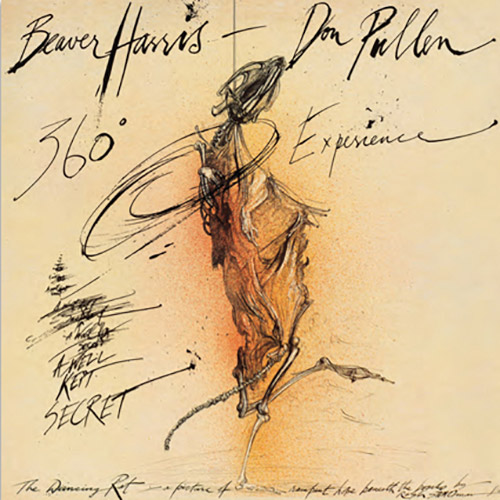


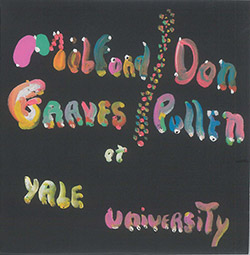
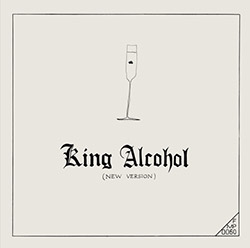


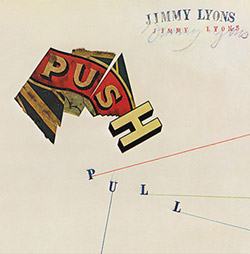







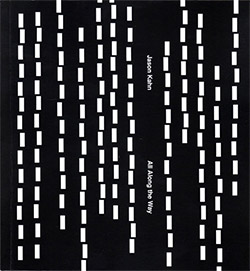

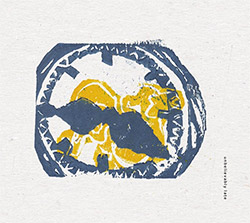



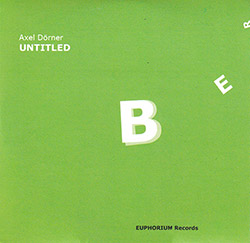
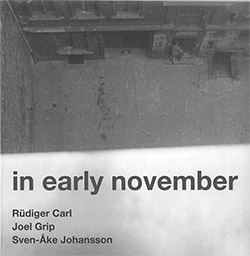



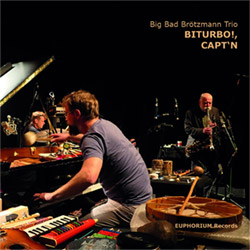














![Barker / Parker / Irabagon: Bakunawa [VINYL]](https://www.teuthida.com/productImages/misc4/35533.jpg)
![Blaser, Samuel / Marc Ducret / Peter Bruun: Dark Was The Night, Cold Was The Ground [VINYL 10-inch]](https://www.teuthida.com/productImages/misc4/35492.jpg)










![Warren, Kenny (Warren / Hoffman / Ellman): Sweet World [VINYL]](https://www.teuthida.com/productImages/misc4/35451.jpg)


![Blake, Ran / Dave Knife Fabris: Live Amsterdam 2006, First Visit [CD + POSTCARDS]](https://www.teuthida.com/productImages/misc4/35275.jpg)
![Sanna, Claudio: Compositori Sardi Contemporanei II [2 CDs]](https://www.teuthida.com/productImages/misc4/35317.jpg)












![Nevai, Nandor: <<The PRICE of FRONTIER>> Book 1: FULK [BOOK + 4 CDs]](https://www.teuthida.com/productImages/misc4/35464.jpg)
![Nevai, Nandor: <<The PRICE of FRONTIER>> Book 2: MARTIAL [BOOK + 4 CDs]](https://www.teuthida.com/productImages/misc4/35465.jpg)
![Nevai, Nandor: <<The PRICE of FRONTIER>> Book 3: JASSOM [BOOK + 4 CDs]](https://www.teuthida.com/productImages/misc4/35466.jpg)
![Nevai, Nandor: <<The PRICE of FRONTIER>> Book 4: HARD-WON [BOOK + 4 CDs]](https://www.teuthida.com/productImages/misc4/35467.jpg)

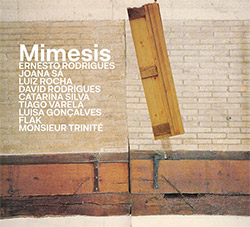




![DNS: Taking Big Bites Of The Khandas Three Cafes Deep [2 CDs]](https://www.teuthida.com/productImages/misc4/35334.jpg)




![Cleaver, Gerald: The Process [VINYL]](https://www.teuthida.com/productImages/misc4/34966.jpg)




![Alva Noto: HYbr:ID II [VINYL 2 LPs]](https://www.teuthida.com/productImages/misc4/35201.jpg)

![Baron, Derek / Luke Martin: Distinct and Concealed [CASSETTE + DOWNLOAD]](https://www.teuthida.com/productImages/misc4/35079.jpg)

![Lyle, Erica Dawn : Colonial Motels [CASSETTE + DOWNLOAD]](https://www.teuthida.com/productImages/misc4/35080.jpg)







![Alva Noto: HYbr:ID III [VINYL 2 LPs]](https://www.teuthida.com/productImages/misc4/35011.jpg)
![Kubisch, Christina / Trondheim Voices: Stromsanger 2022 For Six Voices And Electromagnetic Waves [VINYL]](https://www.teuthida.com/productImages/misc4/34628.jpg)








![Zurria, Manuel: Fame di Vento [3 CDs]](https://www.teuthida.com/productImages/misc4/35167.jpg)

![Granberg, Magnus / Nattens Inbrott / Skogen: Holde Traume, Kehret Wieder! [2 CDs]](https://www.teuthida.com/productImages/misc4/35038.jpg)
![Frey, Jurg: Outermost Melodie [2 CDs]](https://www.teuthida.com/productImages/misc4/35039.jpg)

![Pavone, Jessica: Reverse Bloom [VINYL]](https://www.teuthida.com/productImages/misc4/34895.jpg)




![Modney (Modney / Wooley / Gentile / Roberts / Pluta / Symthe / ...): Ascending Primes [2 CDs]](https://www.teuthida.com/productImages/misc4/34852.jpg)








![Elephant9 with Terje Rypdal: Catching Fire [VINYL 2 LPs]](https://www.teuthida.com/productImages/misc4/35355.jpg)
![Deerlady (Obomsawin, Mali / Magdalena Abrego): Greatest Hits [VINYL]](https://www.teuthida.com/productImages/misc4/34876.jpg)




![Haino, Keiji: Black Blues [2 CDs]](https://www.teuthida.com/productImages/misc4/35109.jpg)



![Surplus 1980: Illusion of Consistency [CD]](https://www.teuthida.com/productImages/misc4/35069.jpg)
![Staiano, Moe: Away Towards the Light [VINYL + DOWNLOAD]](https://www.teuthida.com/productImages/misc4/35037.jpg)
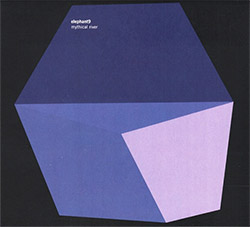



![Caveira (Gomes / Sousa / Abras / Ferrandini): Ficar Vivo [VINYL]](https://www.teuthida.com/productImages/misc4/34643.jpg)
![Gregg, J. J. / David Van Auken: Lunar Prairie [CD w/ DOWNLOAD]](https://www.teuthida.com/productImages/misc4/34611.jpg)

![Coultrain: Mundus [VINYL]](https://www.teuthida.com/productImages/misc4/32439.jpg)
![Mattin: Songbook #6 [VINYL]](https://www.teuthida.com/productImages/misc4/27317.jpg)
![Punkappella: Wake Up [7-inch VINYL]](https://www.teuthida.com/productImages/misc4/17519.jpg)
![Residents, The: WARNING: UNiNC.: Live And Experimental Recordings 1971-1972 [VINYL 2 LPs]](https://www.teuthida.com/productImages/misc4/31521.jpg)
![Coultrain: Phantasmagoria [VINYL]](https://www.teuthida.com/productImages/misc4/30142.jpg)
![Lennon, Sean Ono: Asterisms [VINYL]](https://www.teuthida.com/productImages/misc4/34517.jpg)

![Rotem Geffen: The Night Is The Night [VINYL]](https://www.teuthida.com/productImages/misc4/34631.jpg)
![Coley, Byron: Dating Tips for Touring Bands [VINYL]](https://www.teuthida.com/productImages/misc4/17906.jpg)

![Lost Kisses: My Life is Sad & Funny [DVD]](https://www.teuthida.com/productImages/misc4/lostKissesDVD.jpg)